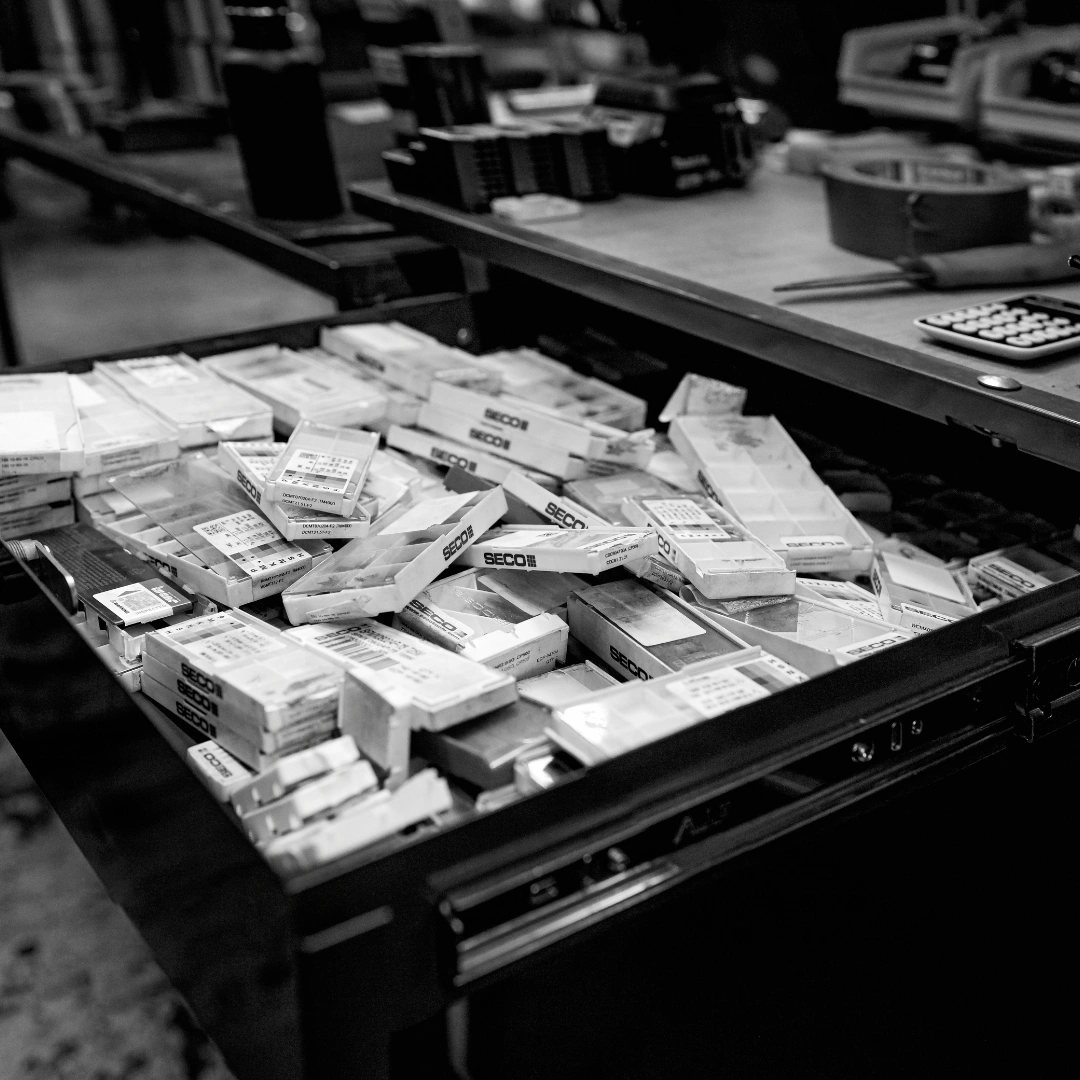Few things disrupt the smooth running of a machine shop more than an unexpected shortage of tools. If the right tools are not on hand when they are needed, then production stops, and when machines are not running, machine shops cannot make money.
To guard against this danger, owners and managers of machine shops might be tempted to keep a larger inventory of tools than they really need, but this overstocking can create a host of more insidious problems that can be just a damaging to their profit margins as stockouts.
Time and money
Vast amounts of time – and therefore money – can be spent maintaining and managing an inventory of tools. Tools need to be ordered, put away, picked, counted and relocated. The larger the inventory, the greater the number of transactions and the greater the number of people involved.
Chaos breeds chaos
The larger the inventory, the more likely it is to be disorganised. This can be disastrous. Imagine a machine shop that makes a wide variety of parts, each of which requires the use of several different tools to complete. It is likely that the machines in this shop will be changed over frequently to keep pace with production. Now imagine a tool crib stored in metal cabinets with drawers – only some of which were labelled – containing a plethora of insert boxes, spare parts and other bits and pieces.
The operator needs a specific tool, but to the naked eye, many of them look identical. They can waste huge amounts of time looking for the right tool, and if they choose the wrong one, hundreds of parts might be produced – and subsequently scrapped – before a problem is spotted.
A disorganised tooling inventory can also create chaos on the shopfloor. If tool stock is left piled-up by machines, it can obstruct machine operators as they try to work and can even pose safety risks.
Keeping track
The larger the inventory, the more difficult it is to keep track of the items as they are used. Some machine shops might track their tools by instructing the outgoing shift to communicate tool consumption and status to the incoming shift, but when the incoming shift finds that the cutters and inserts it needs are worn-out, missing or in the wrong place, this can lead to expensive downtime.
Waste of space
Space used to store a bloated inventory is space that cannot be used for other purposes, such as a new production line, new machinery, office space and more. Further, money tied up in unnecessary assets is money that could be spent elsewhere on profitable endeavours.
Simple solutions
Fortunately, simple and cost-effective solutions to the problem of a bloated inventory exist in the form of tooling inventory management software.
Tooling inventory management software can be integrated into existing enterprise resource planning (ERP) systems to simplify the management of orders, the goods-received process and invoicing.
Using software to manage inventories of tools allows costs to be controlled. Inventory can be made more visible; tooling can be marked as ‘in use’ rather than ‘out of stock’, eliminating over-ordering. Rules can be set to ensure that operators choose used and refurbished tooling before new. Tooling consumption patterns and spending over time can be tracked to identify areas of improvement.
Additionally, the use of inventory-management software for tooling can increase productivity and the amount of time machines can run. The tools available, where they are on the shop floor and even the operative that selected them can all be tracked—eliminating time wasted searching for them.
Incoming orders and deliveries can also be tracked, and low-inventory alerts and automatic ordering rules can be established so both production delays caused by missing tooling, and overstocking, become things of the past.
To learn more about CRIBWISE’s solution to stock optimization, click here.


